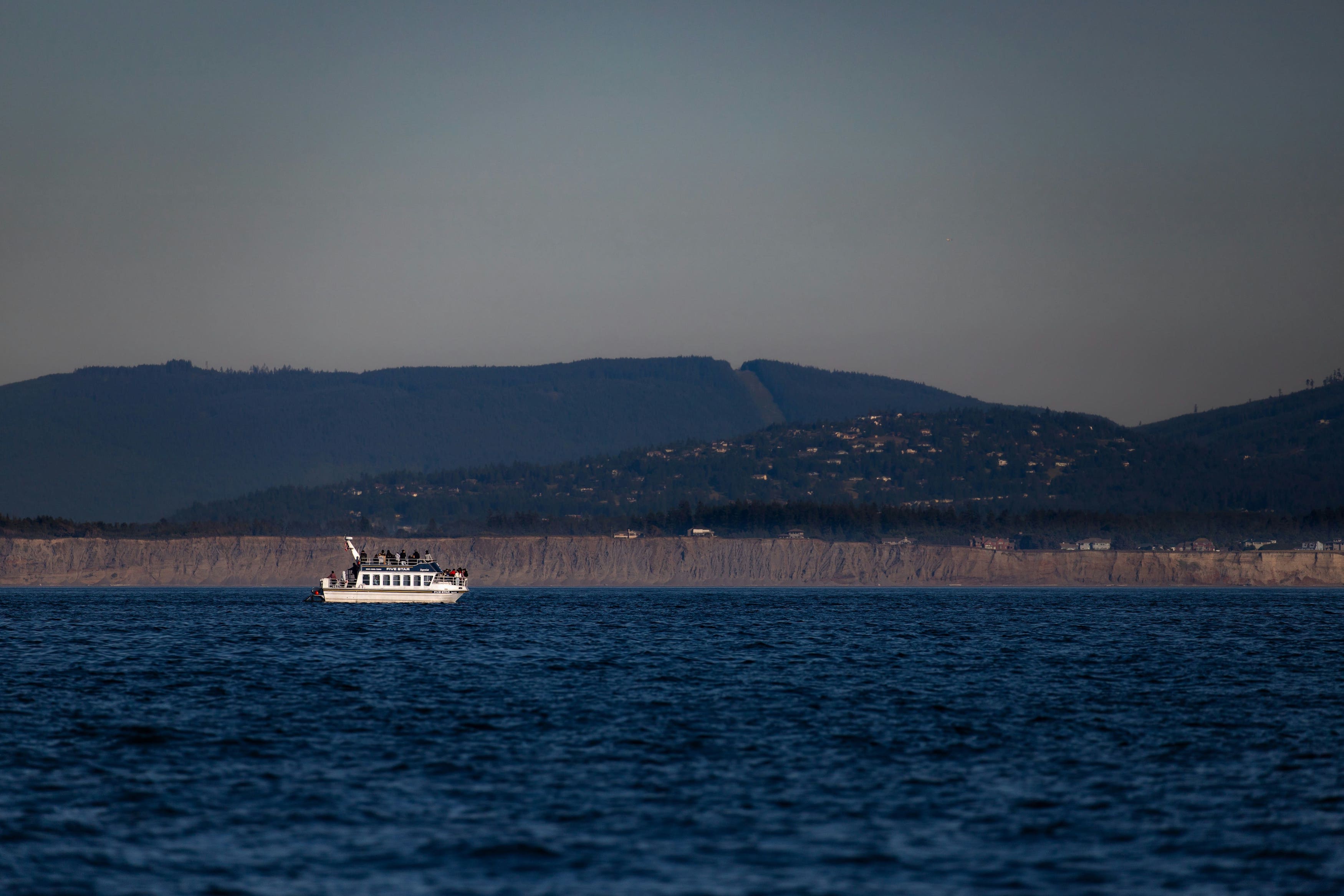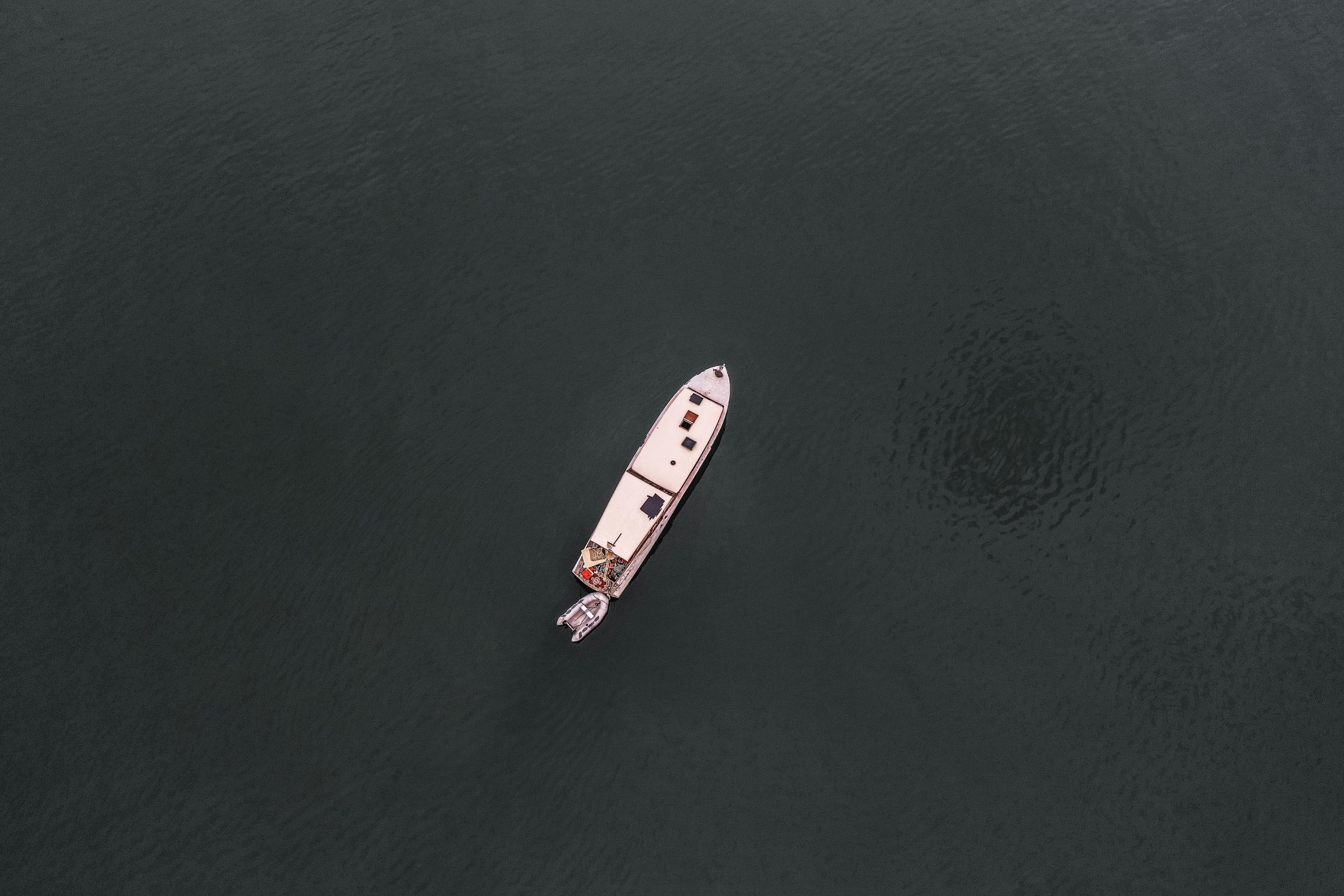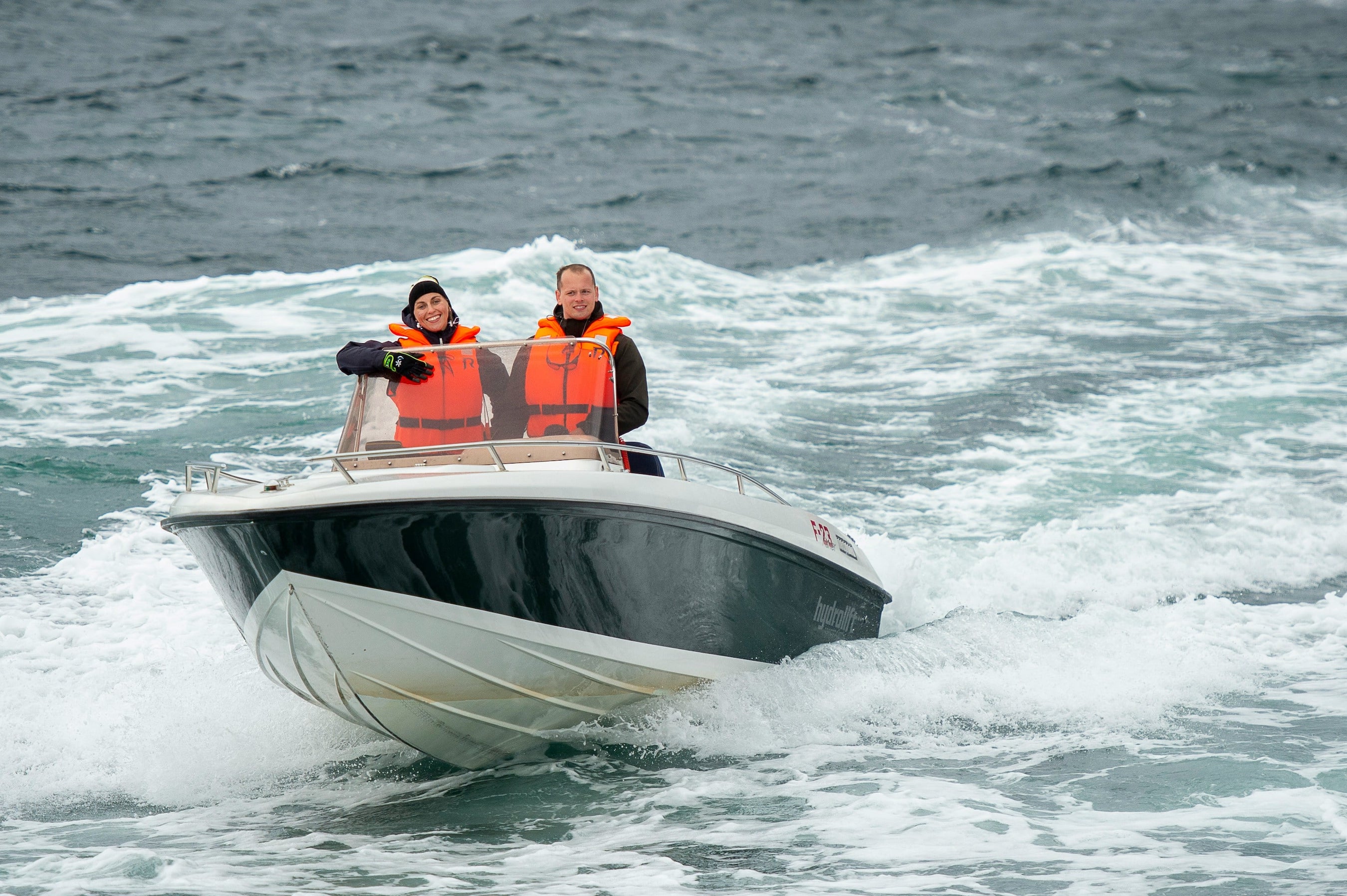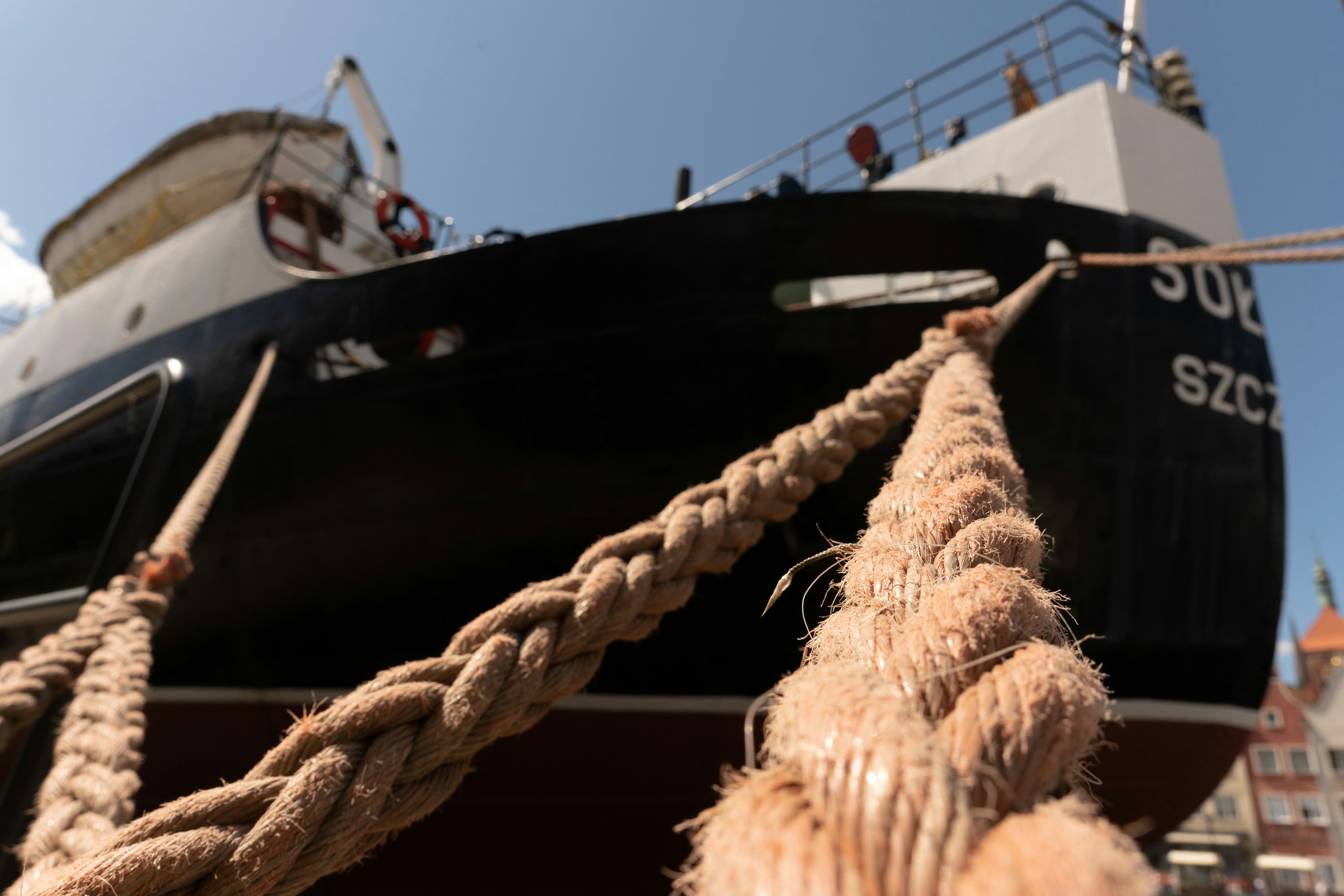The open boat now represents one of the most popular categories in the nautical industry, appealing for its versatility and ease of use. These boats without an enclosed cabin offer an open deck that maximizes the living space on board, allowing you to fully enjoy the joys of navigation in complete freedom. Their refined and functional design perfectly meets the expectations of modern boaters who are looking for conviviality, practicality and nautical sensations at the same time. These models are winning over an increasingly large audience thanks to their ease of maneuver, their reduced maintenance cost and their ability to adapt to multiple uses, whether family outings, fishing sessions or water sports. The objective of this article is to assist you in choosing the ideal open boat by analyzing all the essential criteria to make an informed purchase adapted to your specific needs.
What is an open boat?
Definition and characteristics
An open boat is characterized by the absence of an enclosed cabin or significant superstructure, offering a deck that is completely open to the outside. This design favors outdoor living space and the feeling of freedom, unlike cabin boats that offer protected interior spaces. The clean design of these boats focuses on functionality with layouts optimized for day navigation and various nautical activities.
The hulls of these boats generally have modern and hydrodynamic lines, designed to offer good performance at sea while maintaining an acceptable level of comfort. Construction materials favor fiberglass for its strength and ease of maintenance, although some high-end models incorporate carbon elements to reduce weight.
Advantages and disadvantages of an open boat
Open boats have many advantages that explain their growing success among boaters. The space available on board is maximized, making it possible to receive more guests and to organize a variety of activities. Panoramic visibility from all points on the boat facilitates navigation and reinforces safety, particularly appreciated by novice captains.
Simplified maintenance is another major advantage, as the absence of a cabin considerably reduces the risk of water infiltration and humidity problems. Purchase costs generally remain more affordable than those of cabin boats of equivalent size, making boating accessible to a greater number of people.
However, there are some disadvantages that need to be considered. Weather protection remains limited, even with the installation of an awning or a condom. The lack of permanent sleeping space limits the possibilities for long-distance navigation, and comfort can be reduced during difficult weather conditions.
The main criteria for choosing an open boat
1. Intended use
Coastal walks
For relaxing outings near the coast, choose a boat that offers excellent sailing comfort with ergonomic seats and well-designed relaxation areas. Stability at anchor is becoming essential to take full advantage of swimming breaks and moments of conviviality on board.
Pêche
The layout must include storage spaces for fishing equipment, supports for rods and ideally a fish pond. The ease of cleaning the bridge and the presence of efficient water drains are essential criteria for this specific use.
Watersports
Water skiing or wakeboarding enthusiasts will be looking for a powerful engine and a hull adapted to towing. The back space should be sufficient to set up the equipment and accommodate practitioners between sessions.
Family outings
Safety is becoming the top priority with sufficiently tall bulwarks, secure passages and comfortable seating for all ages. Storage space for personal belongings and safety equipment should be generous.
2. Size and capacity
Less than 5 meters: compact and handy
These models seduce by their ease of transport and launching, often requiring only a light trailer. Their exceptional maneuverability makes them perfect for learning and outings as a couple. Simplified maintenance and reduced costs are significant advantages for tight budgets.
5 to 7 meters: the right compromise
This category represents the ideal balance between practicality and comfort, offering enough space to accommodate a family while remaining manageable. Performance at sea is improving significantly, making it possible to consider more ambitious outings in variable weather conditions.
Over 7 meters: comfort and versatility
Large open boats offer a level of comfort comparable to cabin boats, with generous living areas and sophisticated equipment. Their exemplary marine behavior makes it possible to consider more distant navigations, although the absence of a permanent bed remains a limitation.
3. Motorization and performances
Engine types (outboard, inboard)
Outboard motorization largely dominates the open boat market thanks to its simplicity of maintenance and its ease of replacement. These engines free up the rear space and allow the propeller to be raised when navigating at a shallow depth. Recent models offer remarkable performances with controlled consumption.
The inboard engine remains reserved for high-end models, offering a lower center of gravity and better weight distribution. This technical solution improves marine behavior but complicates maintenance and reduces the space available on board.
Recommended power according to use
For quiet family rides, moderate power is sufficient and helps to reduce fuel consumption. Water sports enthusiasts will have to opt for a more generous engine, capable of towing skiers or wakeboarders effortlessly. Local regulations may impose power limits that must be strictly adhered to.
4. Onboard comfort and equipment
Sun lounger, awning, center console
The front sun lounger is a popular comfort element for relaxing moments at anchor. Its transformation into a seat makes it possible to optimize space according to needs. The center console makes it easy to drive and provides secure storage space for navigation equipment.
The sun awning is becoming essential for summer outings, effectively protecting passengers from UV rays. The most advanced models offer complete locking systems that temporarily transform the open into a semi-closed space.
Storage, seats, table, shower
The optimization of storage largely determines the practicality of using the boat. Waterproof cases effectively protect personal belongings and sensitive equipment. The presence of a removable or retractable table facilitates meals on board and moments of conviviality.
The deck shower is particularly useful for rinsing after swimming and cleaning fishing equipment. The most refined models incorporate water heating systems for optimal comfort.
5. Budget and maintenance
New/used purchase price
The new market offers entry-level models available from 15,000 euros for the smallest units, while high-end open boats can exceed 100,000 euros. The opportunity offers interesting opportunities, especially for recent models still benefiting from the manufacturer's warranty.
The evaluation of a used boat requires in-depth technical expertise, especially in terms of the hull, engine and electrical equipment. Specialized financing solutions facilitate access to nautical property with adapted conditions.
Annual maintenance costs
The annual maintenance of an open boat generally represents 10 to 15% of its purchase value, including engine overhaul, winterization, insurance and port costs. This ease of maintenance is a significant advantage compared to more complex cabin boats.
Outboard motorization greatly facilitates maintenance operations, often allowing basic interventions to be carried out by yourself. Modern embedded systems, such as Oria Marine's IoT boxes, allow precise monitoring of engine parameters and facilitate preventive maintenance.
Resale and residual value
Open boats generally maintain a good residual value, especially models from well-known and well-maintained brands. Sustained demand on the second-hand market favors resales, especially for the most popular intermediate sizes.
The preservation of all maintenance documents and the traceability of technical interventions significantly enhance the value of the boat during resale. However, rapid technological change can affect the value of older models.
Comparison of the best open boat models
Cap Camarat 6.5 CC — Jeanneau
Strengths: manufacturing quality, stability
The Cap Camarat 6.5 CC perfectly illustrates French excellence in nautical construction. Its deep V-shaped hull combined with a wide transom provides remarkable stability, both when sailing and at anchor. The careful finishes and the use of quality materials guarantee exceptional longevity.
The interior layout favors functionality with numerous and well-designed storage spaces. The center console integrates all modern navigation equipment, while the rear living space can comfortably accommodate eight people. The front sunbathing area can easily be transformed into a family relaxation area.
Disadvantages: a bit high price
The high-end positioning of this model is reflected in its purchase price, which can be an obstacle for tight budgets. Additional options and equipment can quickly increase the final bill. Maintenance, although simplified, requires the use of qualified professionals to maintain the warranty.
Flyer 7 SpaceDeck — Beneteau
Strengths: design, comfort on board
The Flyer 7 SpaceDeck revolutionizes the traditional open boat approach with its daring design and technical innovations. The modular bridge allows the space to be transformed according to needs, moving from a navigation configuration to an optimized relaxation area. General ergonomics promote on-board traffic and conviviality.
The materials used emphasize resistance and aesthetics, creating a contemporary and refined atmosphere. The ergonomic seats and smart storage spaces reflect a design designed for the user. The integrated motorization frees up rear space for nautical activities.
Disadvantages: fuel consumption
The high performance of this model is paid for by fuel consumption that is higher than the average in its category. This characteristic can limit autonomy during long outings and significantly impact the operating budget. The optimization of settings and the adoption of economical driving make it possible to partially control this parameter.
Quicksilver Activ 555 Open
Strengths: excellent value for money
The Quicksilver Activ 555 Open shows that it is possible to reconcile quality and financial accessibility. Its careful construction and generous standard equipment make it a reference in its price category. The exceptional maneuverability will appeal to beginners and experienced sailors alike.
The layout focuses on the essential with clever solutions to optimize the available space. The robustness of the construction and the simplicity of the systems guarantee easy and economical maintenance. This model is an excellent gateway to yachting for families.
Cons: reduced space for long rides
The compactness that is the charm of this model becomes a limitation during extended outings with many passengers. Storage space, while functional, may not be sufficient for bulky equipment. Comfort may be affected by sea formed due to the reduced size of the hull.
Ranieri Voyager 19S
Strengths: agility, performance
The Ranieri Voyager 19 S embodies the Italian tradition of sports boat building. Its tapered hull and optimized motorization provide exceptional sailing sensations. The remarkable agility of this model will appeal to fans of sporty driving and thrills.
Construction materials favour lightness without compromising solidity, making it possible to obtain remarkable performances with measured motorization. The clean and functional design is perfect for dynamic outings and sporty water activities.
Disadvantages: limited basic equipment
The sporty orientation of this model is reflected in relatively basic comfort equipment. The absence of certain layouts that are considered standard on other models can disappoint users looking for comfort above all. The options available allow the equipment to be customized according to specific needs.
Zodiac Medline 580 (open hardtail)
Strengths: safety, marine behavior
The Zodiac Medline 580 perfectly illustrates the advantages of a hardtail with its pneumatic tubes that offer exceptional passive safety. Its remarkable marine behavior allows it to evolve calmly in variable conditions. Stability at anchor and easy access to water are significant assets.
The modularity of the layout makes it possible to adapt the configuration according to the intended use. The legendary robustness of the French brand guarantees exceptional longevity, even under intensive use. Simplified maintenance and shock resistance appeal to demanding users.
Disadvantages: less comfort than a rigid
The semi-rigid nature of this model implies some limitations in terms of comfort and interior layout. The space available is more restricted than on a rigid boat of equivalent dimensions. The vibrations transmitted by the tubes can affect comfort during prolonged navigation.
Which open boat should you choose according to your profile?
For a family
Families will prefer a model of at least 6 meters that offers enough space to comfortably accommodate parents and children. Safety is the priority criterion with high bulwarks, secure passages and stable seating. The storage space should allow the storage of personal belongings, safety equipment and water toys.
The presence of a sun awning is becoming essential to protect the youngest from UV rays. A deck shower will make it easy to rinse after swimming and maintain cleanliness on board. The moderate engine will focus on safety and operating economy, while maintaining sufficient performance for occasional towing activities.
For a passionate fisherman
The fisherman will above all look for functionality with specialized storage spaces for fishing equipment, supports for rods and ideally a fish tank. The ease of cleaning the deck and the presence of effective water drains will facilitate maintenance after outings. A remote console will free up rear space for fishing.
Anchor stability is an essential criterion for maintaining comfort during long fishing sessions. Specialized electronic equipment such as sounders and GPS trackers should be able to be easily integrated. A quiet motorization will avoid scaring fish during delicate approaches.
For thrill seekers
Fans of water sports and thrills will prefer performance with a generous engine and a hull adapted to towing. The back space should be sufficient to install water skiing or wakeboarding equipment and accommodate practitioners between sessions. The robustness of the construction will have to withstand the significant constraints of towing.
An ergonomic center console will facilitate sporty driving and will allow the supervision of towed practitioners. Security systems like circuit breakers and surveillance mirrors will improve the safety of practitioners. A model like the Ranieri Voyager 19 S will perfectly match this usage profile.
For versatile use
The versatile user will seek a balanced compromise between all of the above criteria. A 6 to 7 meter model like the Cap Camarat 6.5 CC will offer the versatility needed to adapt to all situations. The modularity of the arrangements will make it easy to switch from a family configuration to sports use.
Standard equipment should be comprehensive enough to avoid expensive options, while maintaining the possibility of evolution as needed. Residual value will be an important criterion to facilitate future developments towards a more specialized model.
Buying advice and sea trials
The importance of doing a test before buying
The sea test is an absolutely essential step before buying an open boat. This approach makes it possible to concretely assess the behavior of the boat in real conditions and to verify that it meets your expectations. Take advantage of this opportunity to test all the equipment and embedded systems, from motorization to comfort equipment.
Vary test conditions by testing different speeds and sea configurations to assess the versatility of the boat. Feel free to bring the whole family along for the test to get everyone's impressions. Driving sensations, stability and noise levels are subjective elements that can only be appreciated in a real situation.
Where to buy: concessions, boat shows, opportunities
Official dealerships offer the advantage of manufacturer warranty and specialized after-sales services. Professional salespeople have the necessary technical expertise to advise you in your choice and organize sea trials. Boat shows are an excellent opportunity to discover several models and compare offers in an environment conducive to negotiation.
The second-hand market offers interesting opportunities, especially for recent models. Technical expertise then becomes essential to assess the real condition of the boat and avoid unpleasant surprises. Specialized platforms and professional brokers facilitate research and secure transactions.
Conclusion
Choosing an open boat requires careful consideration taking into account your specific needs, your budget and your sailing expectations. Technical criteria such as size, engine and equipment must be balanced with practical aspects such as maintenance and operating costs. The models presented in this guide illustrate the diversity of the current offer, from entry-level solutions to high-end boats.
Investing in an open boat is much more than a simple purchase, it is access to an art of living and unforgettable moments of sharing. Take the time to compare several models, conduct sea trials, and consult with experienced owners to make an informed choice. Modern yachting offers solutions adapted to all budgets and all use profiles, you just need to find the model that perfectly matches your nautical aspirations.
FAQ — Frequently asked questions
What is the best open boat to start with?
To start boating, choose a compact model of 4 to 5 meters such as the Quicksilver Activ 555 Open, which offers excellent maneuverability and controlled costs. These boats allow you to learn the basics of navigation while maintaining a high level of safety. Simplified maintenance and easy transport are significant advantages for beginners.
What license do you need to pilot an open boat?
French regulations require a coastal license for boats of more than 6 horses or more than 6 meters in length. Models under 6 horsepower can be driven without a license, but training is strongly recommended. An offshore license becomes necessary to navigate beyond 6 miles from shore, regardless of the size of the boat.
Can you tow a buoy or a wakeboard with an open boat?
Most open boats are ideal for towing water sports equipment, provided they have sufficient motorization. A minimum of 60 horsepower is recommended for towing a skier, while wakeboarding often requires over 200 horsepower to create satisfying waves. Always check the manufacturer's specifications for towing limits.
What is the average annual maintenance of an open boat?
The annual maintenance of an open boat generally represents 10 to 15% of its purchase value, including engine overhaul, winterization, insurance and port costs. This estimate may vary depending on the intensity of use and the type of navigation practiced. Recent boats often benefit from extended warranties that reduce maintenance costs in the first few years.
Is it better to buy new or used?
Buying a new one guarantees the absence of hidden defects and offers a complete manufacturer's warranty, but represents a larger initial investment. The opportunity allows access to higher-end models for an equivalent budget, but requires technical expertise to assess the real condition of the boat. 2-3 year old models are often the best compromise between price and peace of mind.









